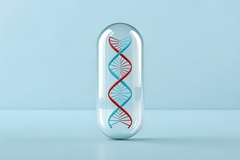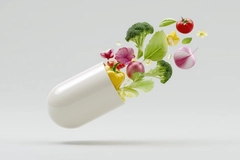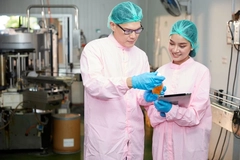Sugar-sweetened beverage consumption soaring among young people, warn experts

14 Aug 2024 --- Children and teens worldwide consumed nearly 23% more sugar-sweetened beverages (SSBs) in 2018 compared to 1990. This concerning figure was revealed through a news analysis of dietary data from 185 countries conducted at the Friedman School of Nutrition Science and Policy at Tufts University, US. Teens, urbanites and children of parents with lower education levels consume the most SSB.
“SSBs increase the risk of overweight and obesity in children and adolescents, increasing the likelihood of being overweight in adulthood,” Laura Lara Castor, first author of the study who worked on it while at Tufts University, tells Nutrition Insight.
“Excess body weight is one of the main risk factors for developing cardiometabolic chronic diseases such as diabetes and cardiovascular disease. Rising trends in SSBs will likely increase the risk of these diseases in the coming decades.”
The study, published in The BMJ, estimated that 10% of young people — defined as those between three and 19 years — worldwide could be consuming more than seven servings of SSB every week, close to twice the overall intake of adults.
“Countries with emerging economies are already seeing increases in body weight and cardiometabolic diseases, so if strategies and policies are not implemented or updated to curb SSB intakes, a continuing rising trend in these diseases would be expected.”
The Global Dietary Database
For the data analysis, the research team used the Global Dietary Database (GDD), which aims to provide a comprehensive compilation of what people around the world are eating and drinking. In a large model, the Tufts team analyzed GDD data from over 1,200 surveys conducted between 1990 and 2018.
 SSBs increase the risk of overweight and obesity in children and teens.“A major strength of the GDD is the large compilation of dietary surveys included in the model and the assessment of intakes by key sociodemographic factors including age, sex, parental education and area of residence,” Castor explains.
SSBs increase the risk of overweight and obesity in children and teens.“A major strength of the GDD is the large compilation of dietary surveys included in the model and the assessment of intakes by key sociodemographic factors including age, sex, parental education and area of residence,” Castor explains.
“These allow us to better understand what factors might be contributing to higher SSB intakes and, therefore, to generate more targeted and effective policies. A major limitation is that there is limited data for some nations and years, particularly low-income nations, so the estimates in these countries might not be as accurate.”
The study defines SSBs as sodas, juice drinks, energy drinks, sports drinks and home-sweetened fruit drinks with added sugars that contain more than 50 calories per one-cup serving. It excludes 100% fruit juices, non-caloric artificially sweetened drinks and sweetened milks.
SSBs around the world
The GGD data analyzed reveals that the consumption of SSBs among young people varies considerably based on world region. On average, globally, youngsters consume 3.4 servings per week.
In South Asia, children and teens drink 1.3 servings a week, while the same age group in Latin America and the Caribbean drinks 9.1 servings a week.
Among nations with comparably larger populations, Mexico had the highest SSB consumption (10.1 servings per week), followed by Uganda (6.9), Pakistan (6.4) and South Africa and the US (both 6.2).
Sub-Saharan Africa experienced the highest increase in SSB consumption among young people between 1990 and 2019. The average consumption in the region is now 2.17 servings per week, but this indicates a 106% rise during this period.
Senior author Dariush Mozaffarian, Jean Mayer professor of nutrition and director of the Food is Medicine Institute at the Friedman School of Tufts University, says: “Our findings should raise alarm bells in nearly every nation worldwide. The intakes and trends we’re seeing pose a significant threat to public health, one we can and must address for the future of a healthier population.”
 The study estimates 10% of young people worldwide could be consuming more than seven servings of SSB a week.Policy implications
The study estimates 10% of young people worldwide could be consuming more than seven servings of SSB a week.Policy implications
Castor tells us that a single policy might not resolve the issue, but a combination of policies, including “soda taxation, food marketing restrictions, front-of-package labeling regulations and restrictions at the school,” might be more effective.
Discussing the effectiveness of existing measures like soda taxes and school restrictions in regions where they’ve been introduced, she explains that “many of the policies were implemented around 2015, and our model might not have captured the effect of all of them.”
“However, we did find that intakes in the high-income countries region decreased from 2005 to 2018, possibly due to policies and strategies that have started to work.”
The UK has implemented a soft drinks industry levy to incentivize companies to reduce the sugar content of beverages. This has been shown to prevent obesity and improve dental health.
Australia is looking to expand SSB taxation in an attempt to address the rise of diabetes. German researchers have called on their government to introduce tired SSB taxation to reduce public health spending.
Castor asserts further research is needed to understand the long-term impact of SSB consumption on youth, especially in under-studied regions. She calls for “prospective cohorts following-up kids through their adulthood, more frequent nationally representative surveys including multiple 24hr recalls or food records.”
By Milana Nikolova












